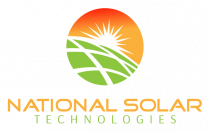Understanding Solar Industry Innovations That Are Shaping the Future of Renewable Energy
As the world increasingly turns to renewable energy sources, the Solar Industry stands at the forefront of innovation, shaping the future of sustainable power. This dynamic field encompasses a myriad of technological advancements and strategic approaches, driving the evolution of solar energy solutions that not only enhance efficiency but also broaden accessibility. From cutting-edge photovoltaic materials to groundbreaking energy storage systems, understanding these innovations is crucial for stakeholders ranging from manufacturers and investors to consumers and policymakers.

In this article, we will delve into the latest trends and tips that highlight how the Solar Industry is transforming the energy landscape, empowering individuals and communities to embrace a cleaner and more sustainable future.
By recognizing and harnessing these advancements, we can collectively contribute to a greener planet while reaping the economic benefits of renewable energy.
Emerging Solar Technologies Revolutionizing Clean Energy Production
The solar industry is on the brink of a revolution, driven by emerging technologies that are reshaping clean energy production.
Innovations such as bifacial solar panels, which capture sunlight on both sides, and solar skins that blend aesthetically into roofs are making solar power not just efficient but also visually appealing. These advancements not only enhance energy production but also offer homeowners and businesses more choices tailored to their specific needs.
Tips for maximizing the benefits of these innovations include exploring different types of solar systems to find the most efficient options for your location and investment. Consider selecting bifacial panels if your home receives ample sunlight from multiple angles, as they can substantially increase energy yield. Additionally, keep an eye on advancements in energy storage systems, which are crucial for storing surplus energy generated during peak sunlight hours for use at night or on cloudy days.
Another exciting trend is the integration of artificial intelligence in solar energy systems.
AI can optimize energy consumption by predicting patterns and adjusting output accordingly. Homeowners can benefit from this technology by investing in smart solar inverters that utilize AI to maximize efficiency. Always stay updated on the latest in solar technology to ensure you’re leveraging these innovations for a cleaner, cost-effective energy solution.
The Role of Smart Grids in Optimizing Solar Energy Distribution
The integration of smart grids is revolutionizing the solar energy landscape by enhancing efficiency and optimizing energy distribution. According to a report by the International Energy Agency (IEA), the global solar energy capacity is expected to reach 4,800 GW by 2030, which calls for intelligent systems to manage and distribute this expanding resource effectively. Smart grids facilitate real-time communication between energy producers and consumers, allowing for better load management and reduced energy waste.

One of the most significant advantages of smart grids is their ability to integrate various energy sources, including solar, wind, and battery storage, creating a more resilient and flexible energy system. A report from the U.S. Department of Energy indicates that smart grid technologies can reduce energy costs by up to 20% and enhance the reliability of electricity delivery. This optimization not only benefits consumers through lower costs but also supports the broader goal of increasing renewable energy adoption.
Tips for maximizing solar energy usage include investing in energy management systems that leverage smart grid capabilities. Homeowners should consider smart meters and energy storage solutions to monitor their consumption and production more effectively. Additionally, participating in local energy sharing programs can further enhance the efficiency of solar energy distribution, allowing communities to benefit collectively from renewable sources.
Innovative Solar Materials Enhancing Efficiency and Accessibility
 Innovative solar materials are at the forefront of enhancing the efficiency and accessibility of renewable energy. Recent advancements in photovoltaic technologies, such as the development of perovskite solar cells, have significantly increased energy conversion rates while reducing production costs. Perovskite materials are not only lighter and more flexible than traditional silicon but also exhibit remarkable efficiency under various lighting conditions. This versatility allows for applications in diverse environments, from urban rooftops to rural off-grid areas, broadening access to solar power for consumers and businesses alike.
Innovative solar materials are at the forefront of enhancing the efficiency and accessibility of renewable energy. Recent advancements in photovoltaic technologies, such as the development of perovskite solar cells, have significantly increased energy conversion rates while reducing production costs. Perovskite materials are not only lighter and more flexible than traditional silicon but also exhibit remarkable efficiency under various lighting conditions. This versatility allows for applications in diverse environments, from urban rooftops to rural off-grid areas, broadening access to solar power for consumers and businesses alike.
Additionally, advancements in transparent solar panels are paving the way for solar energy generation to be integrated into everyday structures. By allowing windows and facades to harvest solar energy, these materials turn buildings into active energy producers without compromising aesthetics. This innovation has the potential to revolutionize urban architecture, making solar energy an integral part of city landscapes. Such innovations represent a significant step towards a sustainable future, enabling more people to harness the power of the sun while contributing to the global shift towards renewable energy.
Integrating Artificial Intelligence for Predictive Solar Power Management
The integration of artificial intelligence (AI) in solar power management is revolutionizing how we harness renewable energy. By utilizing AI algorithms, solar companies can predict energy production more accurately based on weather patterns, historical data, and real-time analytics. This predictive power not only optimizes energy output but also enhances grid stability, allowing for a smoother transition to a fully renewable energy system.
Tips: To maximize the benefits of AI in solar power, consider investing in smart solar monitoring systems that can analyze performance data and provide actionable insights. Regularly updating software and leveraging cloud-based solutions can ensure that you stay ahead in the rapidly evolving solar landscape.
Moreover, AI can also support maintenance strategies through predictive analytics. By assessing the health of solar panels using machine learning, companies can anticipate outages before they occur, reducing downtime and repair costs. This proactive approach allows for efficient resource allocation and ensures that solar facilities operate at peak performance.
Tips: Implementing regular training for staff on AI tools can greatly enhance the effectiveness of predictive maintenance methods. Staying informed about the latest advancements in AI technologies will empower your team to make informed decisions, ultimately driving more sustainable and profitable operations.
Policy Innovations Supporting the Growth of the Solar Industry
The solar industry is experiencing a transformative era, significantly influenced by innovative policies that stimulate growth and adoption. According to the International Energy Agency (IEA), solar power has become the cheapest source of electricity in history, a trend further propelled by favorable governmental initiatives. For instance, the U.S. solar market saw a remarkable 20% growth in 2022, thanks to incentives like the Investment Tax Credit (ITC), which encourages installation and reduces barriers for households and businesses alike.
As policies evolve, so do the dynamics of solar technology adoption. The Inflation Reduction Act in the United States, featuring tax credits and rebates for solar energy installations, is projected to add 100 gigawatts of solar energy capacity by 2024, according to the Solar Energy Industries Association (SEIA). This underscores the critical role that policy innovations play in not only promoting renewable energy but also in corporately restructuring how we consume energy.
**Tips:** Adopting solar energy in your home can not only lead to substantial savings on electricity bills but also significantly reduce your carbon footprint. Always explore local and federal incentives that can make your transition to solar more affordable. Additionally, research different solar providers to ensure you are getting the best technology that fits your needs.
Solar Industry Innovations and Policy Support (2015-2022)
Related Posts
-

How to Maximize Your Home Energy Efficiency with Solar Energy Solutions
-

Unlock the Power of Solar Electric: Revolutionizing Sustainable Energy Solutions for Global Buyers
-

Unlocking Global Trade Potential through Solar Power at the 137th Canton Fair
-

How to Effectively Integrate Solar Power Systems into Your Home for Maximum Efficiency
-

Transforming Energy Solutions with Solar Panels Advantages for Global Buyers
-

Top 10 Solar Manufacturers from China at the 137th Canton Fair

